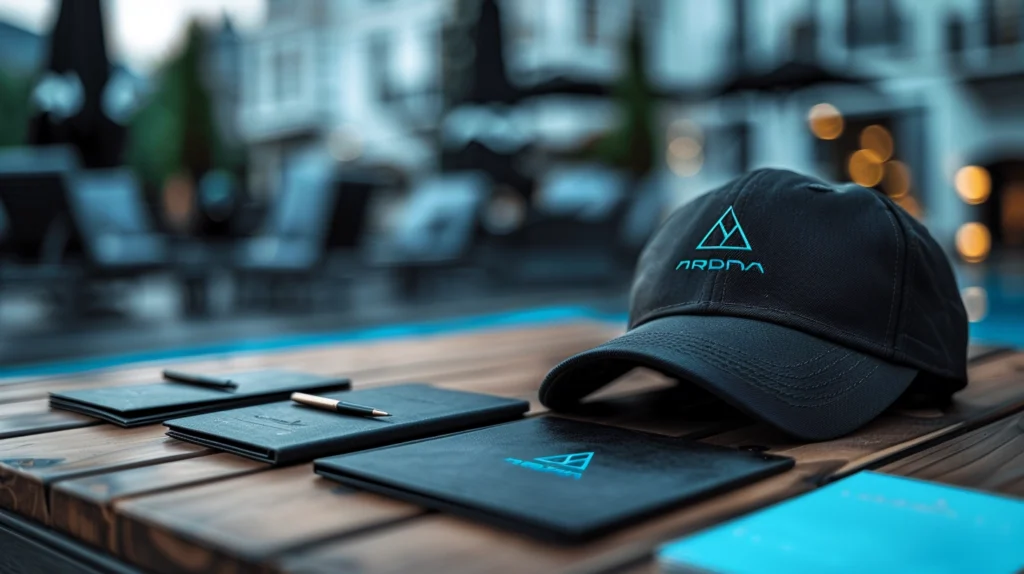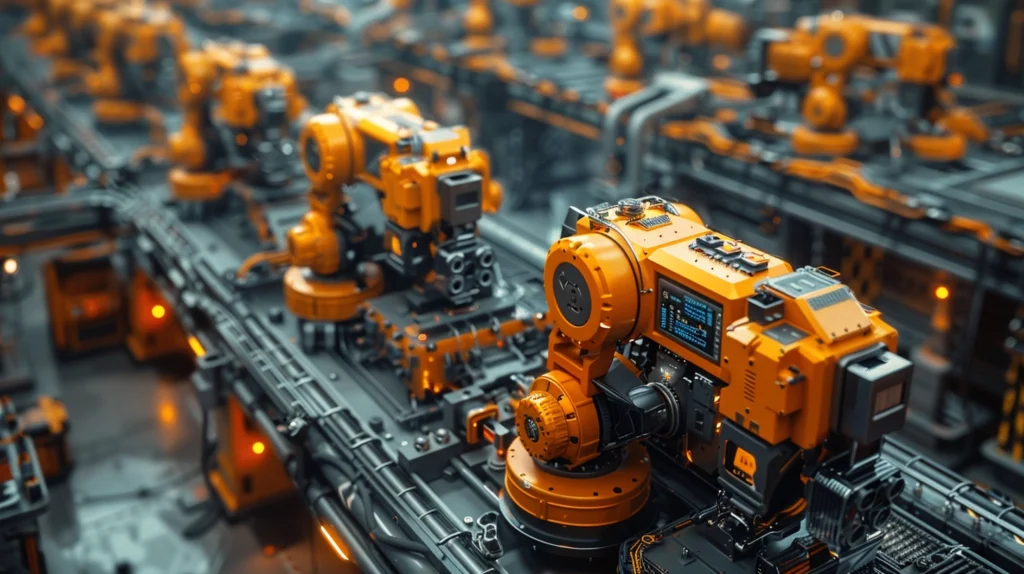Customizing Commerce: How AI Print on Demand Is Meeting Consumer Desires

The print-on-demand (POD) industry, though innovative, has struggled to fully personalize products to meet the unique desires of each consumer within the online shopping space.
Despite the vast potential of e-commerce, businesses have often found it challenging to optimize their platforms in a way that truly enhances customer satisfaction and drives sales, due to a lack of precise consumer data analysis and personalization.
The integration of artificial intelligence (AI) has been a game-changer for the POD industry, leveraging AI algorithms and machine learning to deeply analyze consumer data and preferences.
This technological advancement allows e-commerce platforms to offer highly personalized products and recommendations, revolutionizing the online shopping experience by catering to individual tastes.
The transformative power of AI in the POD industry promises a new era of shopping, where personalization and consumer satisfaction are paramount.
Key Takeaways
Innovate your PoD business with AI.
Customize this prompt with your company details to discover strategies for tailoring products to consumer desires.
AI in print on demand (PoD) is revolutionizing the way custom merchandise is created and sold, by analyzing consumer trends and preferences to offer personalized products. This technology enables businesses to reduce inventory risk, optimize supply chains, and create products that closely match consumer desires. Here's a guide to integrating AI into a PoD business model for tailoring products to individual consumer preferences:
### Customizable Prompt for Integrating AI in Print on Demand
"How can [Company Name], a leader in the print on demand industry, leverage AI technologies to analyze consumer trends, personalize product offerings, and optimize its supply chain for [Specific Products, e.g., apparel, home decor, books]? Consider the use of machine learning algorithms for trend prediction, customization tools for consumers, and AI-driven logistics optimization."
#### Key Areas to Explore:
1. **Consumer Trend Analysis**: How can AI be utilized to sift through vast amounts of data from social media, search trends, and past purchases to predict emerging trends in [Specific Products]?
2. **Personalization Tools for Consumers**: Discuss the development of AI-powered tools that allow consumers to customize products in real-time, ensuring their preferences are reflected in the final product.
3. **Supply Chain Optimization**: Explore how AI can streamline the supply chain, from production to delivery, ensuring efficient operations and reducing waste.
4. **Dynamic Pricing Strategies**: How can AI contribute to dynamic pricing strategies, analyzing market demand and cost variables to set optimal prices for maximum profitability?
5. **Automated Marketing and Customer Engagement**: Discuss the role of AI in automating marketing efforts, from personalized email campaigns to targeted ads, based on consumer behavior and preferences.
6. **Quality Control and Feedback Loops**: Explore the integration of AI in quality control processes, ensuring products meet high standards and incorporating customer feedback for continuous improvement.
### Guide for Use:
- Personalize the prompt with your company name and the specific types of products you offer through your print on demand service.
- Use the insights generated to identify AI technologies that can be implemented to enhance trend analysis, product personalization, and operational efficiency.
- Consider partnering with AI technology providers or investing in in-house AI capabilities to develop and integrate these solutions effectively.
- Regularly review and adjust your AI strategies based on consumer feedback, market trends, and technological advancements to stay ahead in the competitive PoD market.
AI integration into print on demand services not only enhances the ability to offer personalized products but also optimizes operational efficiencies, creating a more responsive and consumer-centric business model.Exploring the Intersection of AI and Print on Demand
Print technology is changing a lot because of AI and print on demand (POD). AI algorithms and machine learning are making it easier to make custom merchandise and bespoke products. This is key for businesses that want to know what customers like and make their online shopping better.
The Evolution of Custom Merchandise: AI’s Role
In the past, everything was made in large amounts without personal touches. But now, predictive analytics and AI algorithms let us make custom apparel and personalized gifts easily. AI helps figure out what people want, helping stores give customers more than they expect.
Personalization at Scale: How AI is Redefining Print on Demand
AI-driven customization is changing POD in a big way. Now, products can match personal style and interests thanks to smart technology. AI helps make goods that fit what customers want, making them happier.
Consumer Satisfaction Through AI-Enhanced Product Customization
Using AI to create custom goods has made customer involvement much better. Online sites use machine learning to offer choices that fit each person’s taste. This combo of AI smarts and human wants is starting a new age in personalized online shopping experiences.
AI is changing more than just POD; it’s affecting many parts of life and work. It’s expected to open new chances, make things better for people, and raise big questions. AI is good at simple tasks and helps with being green. People are excited about what AI will do next in life and work.
| Aspect | AI Impact | Expected Outcome |
|---|---|---|
| Consumer Engagement | AI Algorithms & Machine Learning | Customized product suggestions, improved shopping experience |
| Custom Merchandise | Data-Driven Design | Bespoke products aligning with consumer preferences |
| Operational Efficiency | Warehouse Automation | Enhanced sorting, picking, and shipping processes |
| Environmental Sustainability | AI-Enabled Algorithms | Minimized product wastage, support for recycling initiatives |
| Creative Fields | AI Innovation | New opportunities, legal & ethical considerations |
The future of custom goods and personalized gifts is closely linked with artificial intelligence marketing and print technology. AI is improving the online shopping experience and making business operations better. It’s leading us to a time of ai-driven customization, pushing businesses to focus more on their customers.
The Revolution of On-Demand Printing with AI Technology
Artificial intelligence is changing on-demand printing, making it faster and more personal. Dell leads with AI offerings, impacting many sectors like finance and manufacturing.
Automated Design: From Concept to Creation
AI algorithms are revolutionizing design, turning ideas into products easily. This change allows for easy customization in the print industry. By using consumer insights and predictive analytics, businesses can now offer personalized options like never before.
Predictive Analytics in Fulfilling Consumer Demand
Demand forecasting with AI predicts what consumers will want. This foresight lets companies prepare and meet consumer needs more effectively. The Boston Consulting Group says this could increase revenue and save costs by 2030.
AI Optimization: Efficiency and Personalization Combined
AI brings together efficiency and personalization in on-demand printing. For example, Dell uses recycled materials in their AI PCs, showing AI’s role in improving products and sustainability.
Alluding to the transformative ability of AI, it is not just about augmenting existing processes but also about redesigning entire business models.
In finance, AI automates routine tasks, streamlining operations. This helps address issues like the $60 million food waste from labor shortages in 2022. But, the growth of AI raises important questions about ethics and proper management.
| Sector | Impact of AI | Forecast / Upcoming Trends |
|---|---|---|
| Financial Services | High trading volumes; potential job losses | Significant shifts towards AI automation |
| Transport | Predicted highest job losses | Increased efficiency and safety through automation |
| Energy | Company bankruptcies during crisis | Application of AI in corporate sustainability |
| Manufacturing | Operatives at high risk of automation (UK) | Advanced AI workstations like Dell’s Precision series to manage complex tasks |
With the growth of AI, industries are transforming. This evolution is boosting customization and automation. Thus, it dramatically improves how we meet and foresee consumer desires.
AI Print on Demand: Tailoring Products to Consumer Desires

The rise of generative AI is changing the fashion and luxury worlds. It’s more than just a new look—it’s boosting profits big time. By making custom, personal items more common, these industries could add up to $275 billion to their profits in just a few years. Companies using AI to personalize products are making 40% more money than those that don’t.Luxury brands
are leading the push into generative AI. They’re creating unique shopping experiences for their customers. This approach has led to sales conversion rates of 60 to 70 percent in their stores. It shows that AI-based customization is not just a dream for the future. It’s happening now and changing the way we shop.
Turning to product development, AI is a game-changer for fashion designers. It lets them try out many designs quickly and cheaply. Designers can move from idea to product much faster, cutting down on time and costs.
Start-ups like CopyAI, Jasper AI, and Writesonic are now leading the way. They use generative AI to create marketing that fits each customer’s preferences.
The fashion industry is set to grow to $3.3 trillion by 2030. AI is crucial in reaching that goal. It’s improving how we shop, forecast sales, and manage inventory. This technology is too important to ignore.
Also, with a bigger demand for advanced fabrics by 2024, AI is playing a key role. Companies like Modern Meadow and Bolt Threads are using AI to create amazing new materials. This includes things like lab-grown leather and spider silk.
AI is changing how stores help customers. Chatbots and touchscreens make finding what you want easier and more personal. In the background, AI and 3D printing are helping brands stay current and manage stock better. Tools like Intelligence Node help brands keep up with trends and compete effectively.
The Internet of Things (IoT) is becoming very important in fashion. It links smart devices together, offering even more personalized shopping experiences.
| Tech Trend | Impact on Fashion Industry | Projected Outcome |
|---|---|---|
| Generative AI | Revolutionizes product development, marketing, and customer experience | Add $150-$275 billion in operating profits by 2025 |
| Personalization at Scale | Increases revenues and customer engagement | 40% increase in revenues for brands using personalization |
| Innovative Materials | Novel fabrics like lab-grown leather | Surge in demand for high-tech fabrics by 2024 |
| AI in Retail | Chatbots and touchscreens for enhanced product discovery | Improved shopping experience and customer service |
| Inventory Management | AI tools for trend forecasting and precise inventory control | Efficient management and reduced overhead |
As we move forward, it’s clear that AI is transforming fashion. It’s not just improving things—it’s changing everything from design to sales. AI is redefining what’s possible in the industry.
Pushing the Boundaries: AI and the Future of E-Commerce Personalization

The online retail world is changing. It’s becoming smarter and more personalized, thanks to AI technology. Businesses are now focused on making shopping online better. They use personalized shopping to connect with their customers personally.
E-commerce personalization is leading these changes. It aims to match products and services to each customer’s likes and habits. This approach boosts sales and helps build loyalty by learning from consumer data analysis and using predictive analytics.
Consumer Data Analysis: A Gateway to Tailored Experiences
Companies like Amazon and Netflix use customer data to suggest items or shows people might like. They create these personal experiences with predictive analytics and digital printing. This turns casual visitors into devoted customers by meeting their needs precisely.
Enhancing the User Journey with AI Design Tools
Moo uses AI design tools and data to create customizable products. This blend of tech and creativity makes shopping better. It changes how businesses think about consumer-centric design.
Adapting to Consumer Trends with AI-Driven Insights
Brands need to keep up with changing consumer trends. AI-driven insights help them stay current. They ensure every user gets a personalized experience that feels special to them.
Investing in AI is essential for e-commerce success. AI in shopping is growing fast. In the next years, it will blend more into our online lives, making shopping personal, intuitive, and focused on the customer.
Case Studies: Success Stories in AI-Powered Print on Demand

The AI print on demand world is growing fast. Companies excel by using artificial intelligence to boost personalization and efficiency. A McKinsey analysis says this could add $150 billion to $275 billion to fashion profits soon. These numbers show how AI is changing the game.
Some businesses excel by making their products more personal with AI. They can increase revenue by as much as 40%. Luxury brands see even more impressive sales growth, thanks to AI and customer-focused strategies. Let’s look at who is leading in this exciting area:
| Company | Strengths |
|---|---|
| Printful | Quality and reliability Comprehensive design tools User-friendly interface Strong integration capabilities |
| Printify | Vast global network Competitive pricing User-friendly platform Seamless e-commerce integration |
| Merch By Amazon | Access to Amazon’s customer base Royalty-based profit model Tailored tools for Amazon marketplace |
| Custom Cat | Fast production times Efficiency and competitive pricing Robust integration options |
Printful is known for its high quality. They provide tools and help businesses make unique products. Their easy-to-use platform is perfect for sellers who want the best support.
Printify boasts a wide-reaching network. This lets sellers pick the best print providers. They offer good prices and easy bulk orders. Their user-friendly site is great for a range of sellers, as Popular AI Tools shows.
Merch By Amazon uses Amazon’s reach to offer sellers a big audience. Their way of earning through royalties can be very profitable. This is due to Amazon’s wide audience.
Custom Cat is great for speed and keeping costs down. They balance fast production with cost, which is vital in print on demand. Their efficient platform helps businesses deliver products quickly and integrate well with online stores.
These companies highlight the successes in AI-powered print on demand. Each uses their strengths to meet customer needs and grow the industry.
How to Start a Side Hustle in AI Print on Demand

The rise of artificial intelligence has changed many industries. It goes from crunching numbers to making content. Now, if you want a spot in e-commerce, AI Print on Demand (POD) is a smart pick. Thanks to platforms like Shopify, selling custom products is easy. AI can create digital art, which meets many needs. This includes fancy logos or cool t-shirt designs, appealing to various customers.
Many businesses now use AI to make work smoother and keep customers happy. Chatbots make talking to customers faster, and special analytics help manage stocks better. But, AI shines in POD by speeding up things like research and design. PopularAITools.ai talks about AI’s benefits in POD. It gives tips for starting a side hustle that can grow big. You can use AI for things like figuring out search trends or making your content more likely to sell.
Tools like SmartWriter and Windsor AI help business folks make smart choices. You can use Printful and Amazon Merch to sell custom stuff on big online shops. AI saves time and keeps quality high. For example, AI video editing works for both small and big projects. With AI, your side hustle can not only start strong but also grow big, making a name for itself online.
FAQ
What is AI Print on Demand and how does it cater to consumer desires?
AI Print on Demand (POD) is a new digital printing method. It uses artificial intelligence to make unique products that match what customers want. By understanding customer data, POD can create personalized items that people love. This makes customers happier and gets them items made just for them.
How does AI contribute to the evolution of custom merchandise?
AI helps custom products evolve by using smart design and analytics. It figures out what customers like. This means brands can create special items, like tailored clothes or gifts. Doing so makes customers feel more connected and boosts their involvement.
What advantages does personalization at scale offer to businesses using AI in print on demand?
Personalization on a big scale lets companies sell many custom items without huge stock. AI handles everything from taking orders to sending them out. This cuts waste and makes the supply chain better. It also lets businesses focus on specific customers with tailored products. This improves shopping and keeps customers coming back.
How does automated design from concept to creation benefit the on-demand printing industry?
Automated design makes on-demand printing much faster by turning ideas into designs quickly. This saves time and money. It also allows for more custom options. Businesses can thus meet new customer needs faster with lots of design choices.
What role do predictive analytics play in fulfilling consumer demand in AI Print on Demand?
Predictive analytics is key for meeting demand in AI Print on Demand. It looks at past sales and trends to guess future hits. This makes making things more efficient and avoids making too much. It ensures products match what customers want.
How do AI Optimization and personalization come together to improve the user experience?
AI and personalization work together to better understand and serve customers. By analyzing how people shop, AI can offer helpful product suggestions. It makes shopping smoother and helps find the right products. This makes shopping more personal and builds stronger brand connections.
In what ways can AI-driven insights adapt to and predict consumer trends in e-commerce?
AI can process a lot of data to spot and predict trends. This keeps products relevant and attractive. E-commerce can thus quickly adapt to what customers want, making their strategies more effective.
What are some success stories in AI-powered Print on Demand?
Many businesses have seen success by using AI in Print on Demand. They’ve made products that really speak to customers, leading to higher sales and more engagement. Successes include smart inventory management, quick design creation, and getting better at suggesting products and experiences customers love.
How can one start a side hustle in AI Print on Demand?
To start a side hustle, first learn about the market and popular personalized products. Partner with an AI-driven POD platform for the technology you need. Create a unique brand to stand out. Use social media and online marketing to draw in and keep customers interested in custom products.
Source Links
- https://www.mckinsey.com/industries/retail/our-insights/generative-ai-unlocking-the-future-of-fashion
- https://apparelmagic.com/the-role-of-customization-in-modern-fashion-production-processes/
- https://www.pewresearch.org/internet/2018/12/10/improvements-ahead-how-humans-and-ai-might-evolve-together-in-the-next-decade/
- https://www.dell.com/en-us/blog/using-consumption-based-it-to-enable-customer-obsession/
- https://terfino.com/ai/ai-and-ecommerce
- https://www.theguardian.com/technology/2023/feb/18/from-retail-to-transport-how-ai-is-changing-every-corner-of-the-economy
- https://www.europarl.europa.eu/RegData/etudes/STUD/2020/634452/EPRS_STU(2020)634452_EN.pdf
- https://www.dell.com/en-us/dt/corporate/newsroom/announcements/detailpage.press-releases~usa~2024~02~20240221-dell-technologies-helps-organizations-create-a-modern-workplace-with-new-ai-experiences.htm
- https://techpacker.com/blog/design/top-10-fashion-technology-trends/
- https://www.bayretail.io/articles/personalised-ecommerce-shopping-experiences
- https://www.mckinsey.com/capabilities/growth-marketing-and-sales/our-insights/ai-powered-marketing-and-sales-reach-new-heights-with-generative-ai
- https://www.popularaitools.ai/blog/print-on-demand-midjourney
- https://www.shopify.com/blog/how-to-make-money-using-ai
- https://www.popularaitools.ai/blog/7-expert-tips-for-profitable-print-on-demand-with-ai-tools
